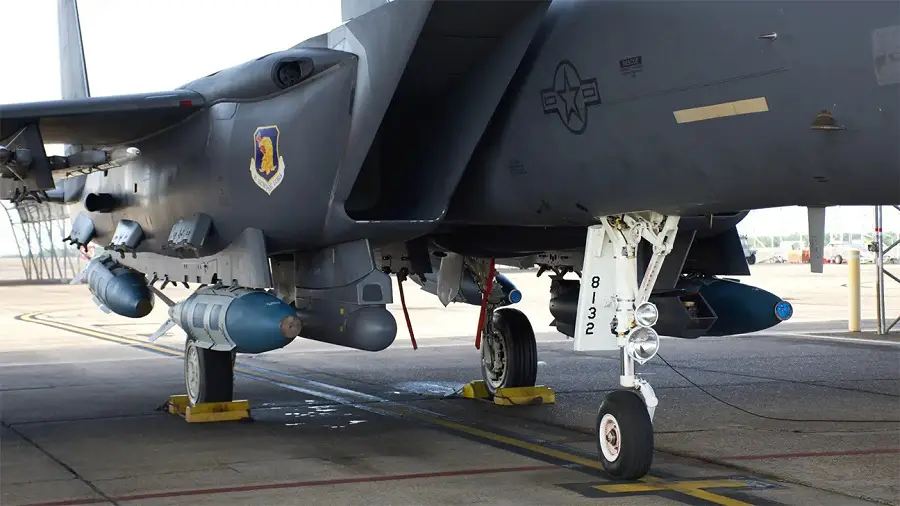The U.S. Air Force Research Laboratory and Eglin Air Force Base’s Integrated Test Team demonstrated a new low-cost, air-delivered capability for defeating maritime threats April 28, that successfully destroyed a full-scale surface vessel in the Gulf of Mexico. An F-15E Strike Eagle released one modified GBU-31 Joint Direct Attack Munition, or JDAM, as part of this test, the second experiment in the QUICKSINK Joint Capability Technology Demonstration, or JCTD, funded by the Office of the Under Secretary of Defense for Research and Engineering. The test succeeded through a collaborative effort with AFRL, the 780th Test Squadron of the 96th Test Wing, and the 85th Test and Evaluation Squadron of the 53rd Wing.

AFRL scientists and engineers are developing a weapon open systems architecture, or WOSA, seeker to enable precise placement of the weapon. The implementation of WOSA also lowers costs by providing modularity via the ability to plug-and-play different manufacturers’ seeker components, which can lead to reduced weapon system costs and enhanced performance. The QUICKSINK program, a partnership with the U.S. Navy, aims to provide options to neutralize surface maritime threats while demonstrating the inherent flexibility of the joint force. This JCTD uses a JDAM to rapidly deliver an immediate effect on stationary or moving maritime targets at minimal costs. While torpedoes predominantly sink enemy ships via submarines, new methods explored through QUICKSINK may achieve anti-ship lethality with air-launched weapons, including modified 2,000-pound JDAM precision-guided bombs.

Torpedoes, such as the heavyweight MK-48, are still the primary method used to sink enemy ships. New methods explored through QUICKSINK may be able to achieve the same kind of anti-ship lethality with air-launched weapons, including modified 2,000-pound class Joint Direct Attack Munition precision-guided bombs. A Navy submarine has the ability to launch and destroy a ship with a single torpedo at any time, but QUICKSINK JCTD aims to develop a low-cost method of achieving torpedo-like seaworthy kills from the air at a much higher rate and over a much larger area. This new capability will provide combatant commanders options to neutralize surface maritime threats and demonstrates the inherent flexibility of the joint force. QUICKSINK is an answer to an urgent need to quickly neutralize massive maritime threats over massive areas around the world.

This latest experiment allowed researchers to assess the scientific and technology challenges associated with the QUICKSINK concept for operational use. A Navy submarine has the ability to launch and destroy a ship with a single torpedo at any time, but the QUICKSINK JCTD aims to develop a low-cost method of achieving torpedo-like kills from the air at a much higher rate and over a much larger area. As it was released over the Gulf of Mexico, where Eglin AFB operates the 120,000 square mile Eglin Gulf Test and Training Range, stakeholders watched the QUICKSINK demonstration online thanks to multiple camera feeds from aerial platforms. The QUICKSINK mission was successful thanks to the hours of planning and preparation provided by the entire test team. This was another example of how the 780th Test Squadron supports weapons developmental test customers and helps deliver unique capabilities to the fighter jet. OUSD(R&E) awarded this JCTD to AFRL’s Munitions Directorate in fiscal year 2021 as part of its ongoing Maritime Weapon Program.












